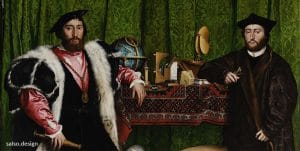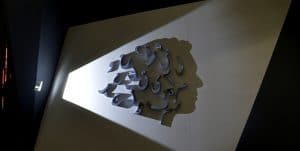There are many different methods used to create artwork. Some artists use an abstract style that might be hard to convey a message with, while others will paint a recognizable object or character. This article dives into the process of abstraction in 3D painting and how it is done successfully.
What is Abstraction?
Abstraction is the process of removing some of the details from an image or object to focus on the overall concept or idea. This can be done in several ways, including changing the angle of view, reducing the size of the image, or changing the color or texture of the object.
One way that abstraction can be used in paintings is by changing the angle of view. For example, a painter might use a low angle to show details close up and a high angle to show details at a distance. This could be done to create a sense of depth or to show different aspects of an object at different points in time.
Another way that abstraction can be used in paintings is by reducing the size of an image. This could be done to make an image more focused or to make it more subtle. It could also be done to show multiple perspectives on the same object simultaneously.
Finally, abstraction can be used in paintings by changing the color or texture of an object. This could be done to create a more abstract image or to show different layers of an object simultaneously.

Photo by Anni Roenkae
Examples of Abstraction in 2D and 3D painting
Abstract paintings are a type of painting that uses abstraction to communicate a story or idea. Abstract paintings can be created in 2D or 3D, and they can use a variety of different techniques to create their abstractions.
One of the most common techniques used in abstract paintings is abstraction. Abstraction is the removal of parts of an object or scene to create a new, more abstract representation.
Abstraction can be used to create different types of abstractions. Some abstractions use simple shapes to create a complex and evocative image. Other abstractions use smaller details to create an intricate and multidimensional image.
If you are interested in creating abstraction in your paintings, there are many different techniques that you can use. Some of the most common techniques include using light and shadow, using color, and using lines and shapes.
If you are interested in learning more about abstraction in painting, there are many resources available online. You can also visit art academies or museums to explore the work of other artists.
Why is Abstraction Important in 3D Painting?
Abstraction is an important element in 3D painting because it allows you to focus on the overall composition of a painting rather than on specific details. By removing details, you can create a more abstract image that is easier to understand.
There are many different ways to achieve abstraction in 3D paintings. You can use shapes and colors to create a purely aesthetic image, or you can use abstraction to explore the spatial dimensions of your painting.
Abstraction is an important tool for creating powerful 3D pictures. By focusing on the composition of your painting, you can create images that are visually striking and emotionally compelling.

Basic Principles of Abstraction
Abstraction is the process of removing elements from a picture or object to create a more general, simplified version. It can be used to create different moods or feelings in paintings.
There are several basic principles of abstraction that painters use. The first is reduction. Reduction means taking away details from a picture or object to create a simpler version. This can be done by reducing the size of the object, the number of colors used, or the amount of detail.
Another principle of abstraction is repetition. Repetition involves using a similar element or shape over and over again in a painting. This can help to create a sense of balance and order in a picture. It can also create a sense of depth and complexity.
Last, abstraction involves creating something that doesn’t exist in reality. This can be done by blurring the lines between reality and fantasy, or by using unusual colors and shapes. By using these basic principles, painters are able to create different moods and feelings in their paintings.

Surprising Uses of Abstraction
abstraction has been used in many surprising ways in paintings over the years. Many artists use abstraction to create striking visuals that can be difficult to understand.
One example of an artist who uses abstraction to create striking visuals is Yayoi Kusama. Her work often features geometric shapes that are strikingly different from one another. This technique helps to create a visually interesting painting that is difficult to understand.
Other artists have used abstraction to create images that are based on reality but are distorted in some way. For example, Vincent van Gogh used distortion to create paintings that unusually depict people and landscapes. He often includes elements such as zigzag lines and swirling colors in his paintings. These elements help to create an abstract image that is based on reality.
Overall, abstraction can be used in surprising ways in paintings. It can help to create striking visuals that are difficult to understand.



